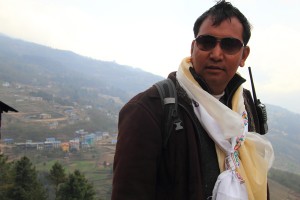Active Mind, Creative Spirit
Reconstruction

There are several stories in the book that were inconsequential when I first heard them in Nepal. Once I was home, I could reflect differently on the experiences and this helped fill out the skeleton of notes in my journals. Much of the time I spent in writing stories into the book involved talking to the people who were there, getting the story straight and complete. This process was a joy for me. I loved hearing how other members of the group perceived the encounters we had.
When I got to Gambu’s story I found a bunch of scrawl in my notebook. Much of it didn’t make sense and none of it was complete, but I knew it was an important bit and needed to be in the book. Luckily Gambu is in the same hemisphere as I am (New York) and I am able to call him pretty easily compared to the other Nepalis in the story. Through about 3 phone conversations I was able to reconstruct the story that Gambu told me in Nepal. I scribbled more notes each time we spoke on the phone, then went off to write and organize thoughts. Then I had to call again to get facts straight. Finally I completed the story as it exists in the book and tears ran down my face when I read it in context for the first time. I think it’s one of the strongest parts of the book in illustrating many of the important themes that run through it. In case you are wondering where to find Gambu’s story in the book, don’t worry, you’ll certainly know it when you get there.

It was my pleasure to know about Gambu’s story in book. Like author said there might be too many things that don’t make sense, but when put them in a pot, it will eventually make sense, and will be meaningful. looking forward to read the story book.